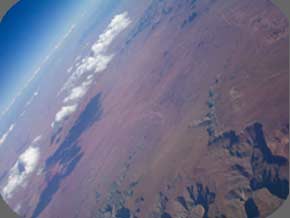Process of Creating A Website
- Meet
- Materials
- Structure
- Design
- Content
- Building
- Test
- Launch
1. First Meeting
When I first meet clients I ask them a series of questions to better understand their need and the scope of the project. (Please feel free to think them over ahead of time or bring materials if you have them.)
First Meeting Questions:
- What is the name and contact info etc of of the group/company/individual the project is for? Briefly tell me about them. What is the time frame?
- What is the purpose of the site? Who will be visiting it? What will they get out of the experience?
- What is the character of the site? (Come up with some words that describe the nature of it: playful, elegant, healthy, glowing, business like, etc.)
- What colors are you drawn to? Do you have a color pallet? Is there a website or print sample you are drawn to? Why? (Show me a couple links or samples.)
- What kind of content do you have? (Images, text etc.) Do you have any special media or design needs? Do you need content to be created for this project? Is there anything else you want to tell me or want to know?
Don't feel you have to memorize these questions, come with whatever you have ready and we will work together toward an initial overall project concept and estimate in this meeting.
2. Gathering Materials (Client)
After the initial meeting the client may need to gather additional files, papers, images, etc for inclusion. Digitizing paper files is often an option, but most clients prefer to email files as attachments or deliver a CD/DVD with files on them. Please phone 707-526-2314x2 to confirm that your emailed data or other package has been sent.
3. Structuring the Site
Information Design is the process of creating the structure of the site by first organizing the information into categories and discovering where groups of information branch apart or overlap.
This is perhaps the most important stage of web design or other media projects-organizing. It's like building a tree from the roots up. Changes can be made (limbs pruned later), but a well designed project is strong and fluid, making it easy for users to navigate.
This is perhaps the most satisfying part of the job--I love to organize information into systems. (That's the true Digital Humanities PhD geek in me talking.)
While much of the structuring comes out of our initial meeting, often it is after clients have delivered the majority of content that construction can begin.
4. Design
Interface Design and the creation of Graphics can proceed as materials are being gathered by the client or any time after a general idea of the site structure is secure.
Given the images, color pallet, shapes and design choices which appeal to the client- I will generally create one or two design ideas to show the client, get feedback on these designs (making another draft if necessary) before creating the final design which is then built to create functional navigation etc.
5. Processing Content
Turning you Word documents (etc), photographs, logos and other materials into web content takes time. Editing images to be the right size and shape, brightness, color, and compression or formatting and editing text as necessary, must occur before these assets can be utilized building the site.
6. Building the Website
Building the website and filling it with content--is like adding the flesh to the skeleton, and depending on the amount of content to process can often occur at the same time as the previous stage. It also includes creating links and other page elements.
7. Testing
This stage consists of checking links, content, and navigation, and fixing bugs. The project is shown to the client for feedback and a couple of rounds of back and forth email or phone communication on fixes is normal.
8. Launch
The final stage is to uploading the site to the client's preferred remote server (and assisting with domain name if requested) or delivering files on disk to the client.


